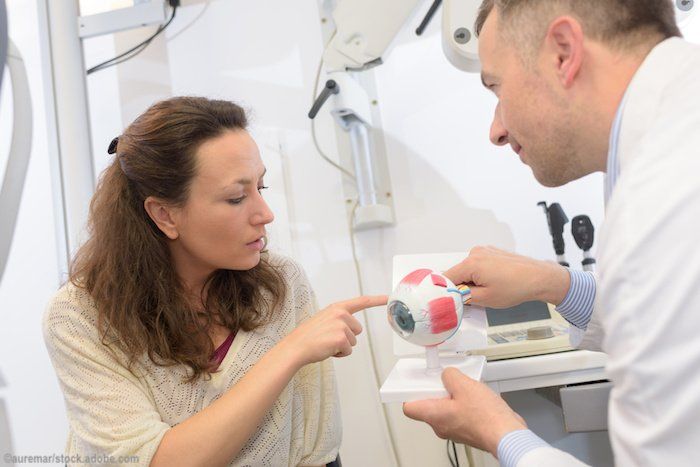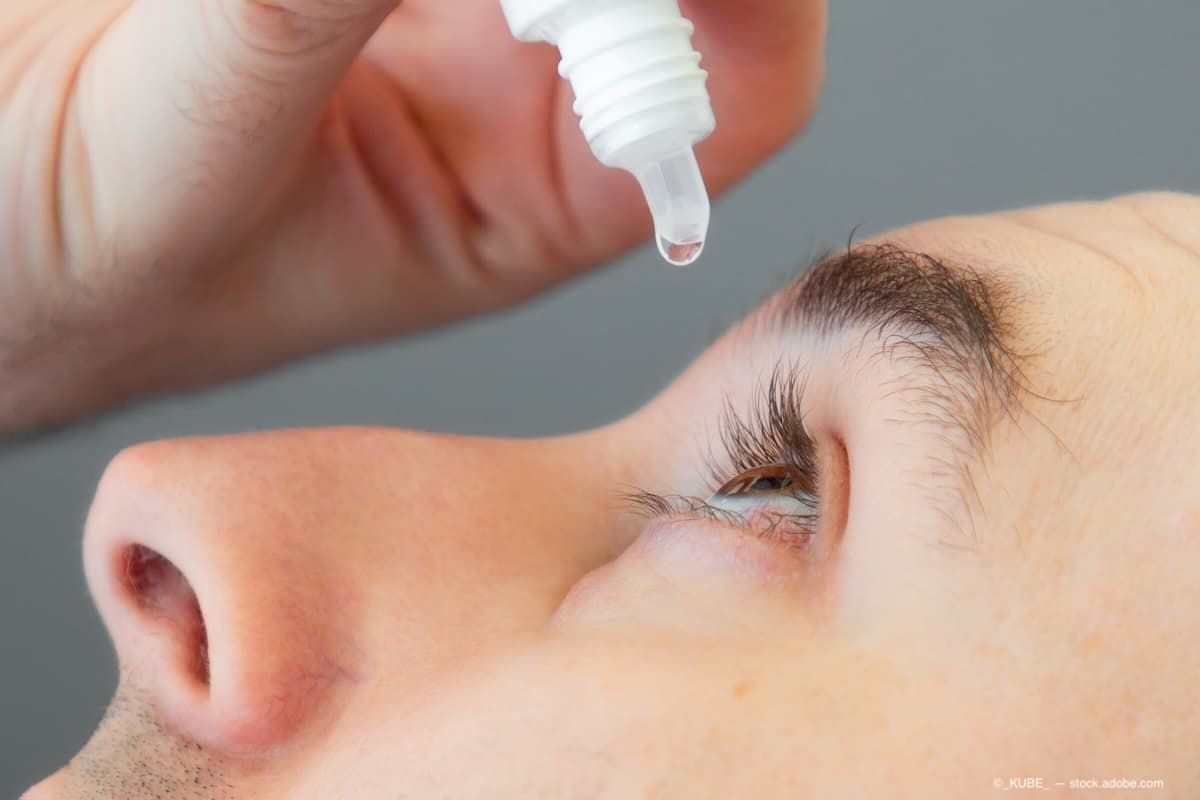Article
Pinpoint underlying blepharitis, dry eye causes for best outcomes
Author(s):
First treat pre-existing conditions, such as medication toxicity, eyelid disease

Dry eye and blepharitis have myriad causes and require individualized therapy, reports Bennie H. Jeng, MD.
Reviewed by Bennie H. Jeng, MD
Dry eye disease delivers a powerful punch worldwide, with from 5% to 30% of individuals affected, and the majority are women. Moderate-to-severe forms of the disease can result in a 60% decrease in patient quality of life, which is on par with conditions such as severe angina, dialysis and hip fractures, and it is associated with high rates of anxiety and depression.
The annual cost to the U.S. healthcare system is almost $4 million. Dry eye results from a number of different etiologies and exhibits different types and subtypes, making treatment challenging, according to Bennie H. Jeng, MD.
“When we treat dry eye, we don’t want to treat just the end result of dryness, but also the root causes if possible,” said Dr. Jeng, professor and chairman, Department of Ophthalmology and Visual Sciences, University of Maryland School of Medicine, Baltimore.
“This is why it is important to understand the intricate and complicated mechanisms of dry eye. If you just prescribe artificial tears, the root of the problem is often ignored,” Dr. Jeng said.
He advises correcting the underlying conditions, such as medication toxicity, corneal exposure from nocturnal lagophthalmos, eyelid disease, and stem cell deficiency.
A look at dry eye treatment
After addressing the underlying conditions, lubrication with preservative-free artificial tears and punctal occlusion are appropriate.
“Punctal occlusion should be done after the ocular surface has been optimized because inserting plugs in a patient with poor-quality tears does not help the eye,” he noted.
If the plugs do work, but they keep falling out, punctal cautery can be considered. Aside from artificial tears, another product that improves lubrication is autologous serum/plasma.
“Because few randomized controlled trials of autologous eye drops have been performed, the meta-analyses have stated that no definitive conclusions can be reached about the benefits of the treatment,” he said.
“However, for those of us who use them, we find anecdotally that they really work for the right patients.”
In addition, tear evaporation can be ameliorated by reminding patients to blink frequently and avoid air streams from forced air heating and cooling systems conditioners. Sometimes, wraparound glasses or goggles can also be effective. For patients who do not respond adequately to standard treatments, clinicians can dig deeper into their bag of potential therapies.
The inflammatory cascade in dry eye can be treated with steroids (loteprednol, prednisolone, dexamethasone, and fluorometholone) and cyclosporine which is available commercially in a 0.05% concentration, with newer concentrations coming, and it can also be compounded in other concentrations such as 0.5% or 1%, he said. Lifitegrast 5% is a newer steroid-sparing drug that can also be used.
Steroids play an important role, especially when treatment is first initiated before transitioning patients to cyclosporine or lifitegrast. The steroid-sparing agents tend to be more suitable for mild to moderate dry eye cases but may not work as well in more severe cases, he noted.
“Treatment with amniotic membrane also has been suggested,” Dr. Jeng commented, but he has no personal experience with it.
Scleral lenses, while not new, have recently become more popular for treating various types of ocular surface diseases, and they should be considered for treating dry eyes. These lenses range from mini-scleral lenses 13 to 16 mm in diameter to regular ones that are 17.5 mm or larger.
These lenses provide a fluid reservoir, are comfortable for most patients, and provide better vision. Most of the time, fitting these requires a collaboration between ophthalmologists and optometrists.
The Mayo Clinic (Schornack et al. Ophthalmology 2014;121:1398-405) reported that the commercially available scleral lenses provide significant and immediate improvement in the ocular surface and vision.
The PROSE lens (BostonSight), which can range from 17.5 to 24.0 mm in diameter, also works well. This is custom manufactured, and so subsequently more expensive and requires specific fitting expertise, he noted.
New, developing dry eye treatments
“This is a very exciting time in the development of new products,” Dr. Jeng said. Some of the newer products include intranasal tear neurostimulation (TrueTear, Allergan), which is FDA approved, and provides a temporary increase in tear production, and amniotic membrane extract.
Crosslinked hyaluronic acid drops are being developed for wound healing and managing punctate epitheliopathy.
Meibomian gland disease
Almost one-half of ophthalmic patients have blepharitis, which also significantly impacts quality of life. The condition is characterized by chronic eyelid inflammation and is associated frequently with symptoms of ocular surface irritation and dry eye.
Just as with dry eye, blepharitis has many causes. Importantly, Dr. Jeng cautioned, there is no single approach that works in managing blepharitis and he cautions patients that there is no cure.
“For me, the endpoint is patient comfort,” he said. “In many cases, the eyes will look the same over an extended period, but if patients start to feel better, that is what matters.”
The first step in management is removing punctal plugs if they are present, as the tear film might not be optimized. Dr. Jeng may culture the lids to identify bacteria that is aggravating the ocular surface and eyelids.
He advises patients to use more than warm washcloth compresses on the lids and suggests micro waving rice in a sock, bean bags, and gel packs to achieve sufficient warmth. Eyelid wipes are now available for use in conjunction with standard washcloth compresses.
Medical treatment includes topical antibiotics, metronidazole and azithromycin; topical steroids; and oral doxycycline, all of which are effective. Oral azithromycin at doses of 1 gram weekly for 3 weeks or 500 mg daily for 3 days and dietary supplementation with omega-3s, fish oil, or flaxseed oil also provide relief. Blepharitis in children is a serious condition as it can be result in corneal scarring and visual loss.
As such, it must be treated aggressively both topically and systemically, Dr. Jeng cautioned. Topical therapy consists of brief bursts of steroids, but the mainstay of treatment centers around oral therapy with doxycycline (if older than 7 years) or erythromycin (if younger than 7 years).
Other treatments include meibomian gland probing, thermal pulsation, intense pulsed-light therapy, and topical testosterone. A newer therapy (TearCare System, Sight Sciences) provides thermal energy to the meibomian glands to stimulate oil expression.
Demodex is an often overlooked because of blepharitis that should be looked for, and it can be treated with tea tree oil, metronidazole gel, and even oral ivermectin (Stromectol, Merck).
Disclosures:
Bennie H. Jeng, MD
E: bjeng@som.umaryland.edu
This article was adapted from Dr. Jeng’s presentation at the 2018 meeting of the American Academy of Ophthalmology. Dr. Jeng has no relevant financial interest in any aspect of this report.




